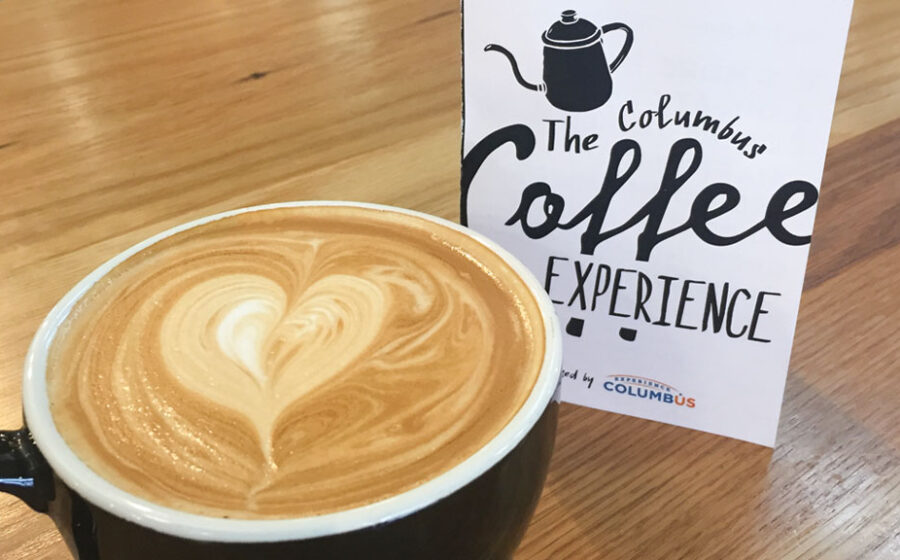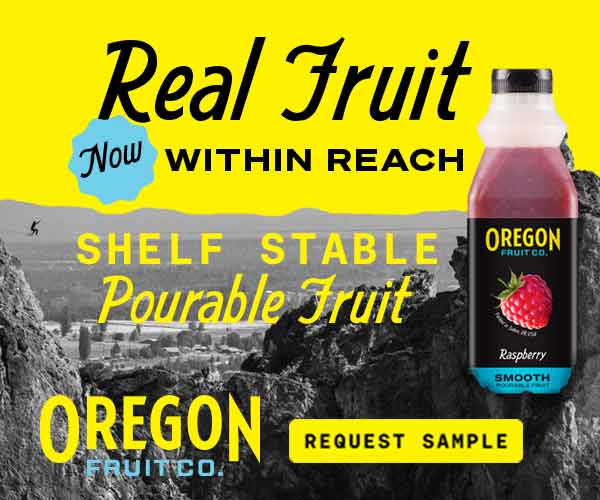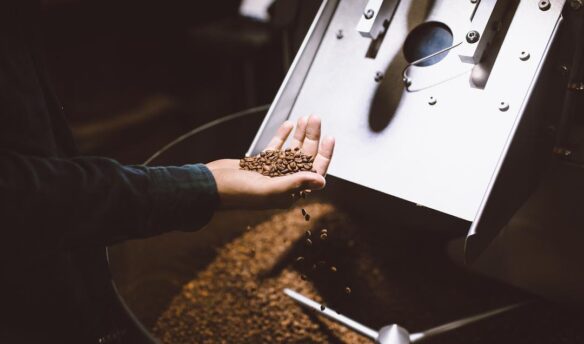Football. Columbus, Ohio, is definitely known for football at the Ohio State University. Jack Hanna and the Columbus Zoo, those are two other things Columbus is known for. White Castle headquarters, yes. A specialty coffee scene? Well, who knew?
“Everyone comes to Columbus for football and White Castle,” says John Justice, director of operations at Café Brioso. “We’re shifting focus to something else we do well: coffee.”
A few years ago, roasters and café owners from the local specialty coffee community approached the city’s marketing organization, Experience Columbus, with an idea for a disloyalty program as a way to show off the coffee scene. Rather than ask people to repeatedly come back to one shop, a disloyalty program encourages patrons to try multiple cafés all over the city. This, in turn, helps raise awareness of the local coffee market, with the hope it will increase local specialty coffee’s share of the market.
With the specialty coffee market representing just 5 percent of the overall coffee market in Columbus, it’s a way for independent shops to unite and support each other, rather than fight over scraps.
Experience Columbus agreed to come onboard and the disloyalty program was named the Columbus Coffee Trail. It launched on September 29, 2014 (National Coffee Day that year), with eight local coffee shops. People who wanted to follow the trail would pick up a passport at any of the participating cafés. If they visited at least four of the eight cafés, bought a coffee, and received a stamp on their passport, they could head over to Experience Columbus’ downtown visitors center and pick up a free T-shirt.
“Within four hours on that first day, people had completed four stops,” says Megumi Robinson, associate director of public relations for Experience Columbus.


The idea had started, as many do, over beers. Mick Evans, co-owner and director of retail operations for One Line Coffee, was hanging out with his friend Erik Senstermacher of Boston Stoker, talking about “coffee stuff.” Many café owners were already hanging out as a community and trying to come up with ideas to get the wider community to take hold of the coffee scene and to provide a heightened cultural experience to both locals and visitors at the same time.
“We were inspired by the disloyalty card program that Gwilym Davies created in 2009, the year he won the World Barista Championship,” Evans says. (Davies, the owner of Prufrock Coffee, slung coffee from a cart at White Cross Street Market in London at the time.) “We went to the tourism bureau because we thought they would have an interest in helping us make it a reality.”
And they were right. Evans says that when the program was presented to Experience Columbus they were receptive to it right away.
As the idea of the disloyalty program developed, Evans was appointed the liaison between Experience Columbus and the coffee community. He was in charge of getting the café owners together leading up to National Coffee Day in 2014. He spoke with each shop and explained how the Coffee Trail would work.
“The standards were pretty loose at the beginning, but they are more formal now,” Evans says.
We want the people of Columbus to have the same pride in their coffee as they feel going to a football game. It’s a specialty, local market to champion and it’s exciting to grow.
There are four requirements, or standards, to join the trail. First, you must be a current member of Experience Columbus by paying an annual membership. Second, your shop must be located within the greater Columbus area, inside the I-270 belt. Third, each café must demonstrate a full commitment by purchasing coffee of a specialty grade, provide excellent customer service, and execute quality beverages. Finally, the café must demonstrate a willingness to participate in the culture and community by talking with other shops on the trail and participating in events.
It was the perfect merger of local coffee and the city. Experience Columbus set up the trail, created the passports as well as a website, and did a marketing and PR push at the launch. In addition, they run the social media efforts surrounding the trail. Experience Columbus even provides the T-shirts.
In turn, the coffee shops provide great specialty coffee and a collaborative vibe. You may go in for coffee at one shop and receive a recommendation of where to go for your next stop. They are also there to talk about coffee and the process and significance of specialty coffee as much as the customer would like to engage.
“We have as much dialogue as a customer wants to have,” says Kenny Sipes, founder of the Roosevelt Coffeehouse, a non-profit, social enterprise coffee shop that opened in 2015 and is a member of the trail. “We are sensitive to being stuck up or pretentious, but we also don’t want to over-stimulate customers with too much information.”
As for whether it’s worth it for café owners or roasters to join an effort such as the Columbus Coffee Trail, Sipes believes it’s extremely beneficial, for the local exposure as well as the PR and marketing value that Experience Columbus provides.
“I have spent zero dollars on marketing,” Sipes says of the Roosevelt Coffeehouse, which had the fifth most redemptions on the trail last year. It costs the cafes $425 per year to join, but according to Sipes, his shop alone had 500 redemptions on the passports, which were mostly people buying four-dollar coffees, so he easily made his money back, and then some.
Overall, Robinson says there were more than 2,000 T-shirts given out in 2015. “The passports fly off the shelves,” she says. Things are going so well the trail is adding five more cafés in 2016 for a total of thirteen stops.
But what’s unique about the Columbus Coffee Trail is the collaborative effort that holds it together. “Columbus has been a coffee city for a minute,” Evans says. “Stauf’s and Brioso were promoting specialty coffee thirteen years ago, before it was cool. You can call us up-and-coming because we’ve only just begun [to promote], but beyond that each shop is doing, and has been doing, great things.”
The intimacy and solidarity of the café owners and roasters on the trail is part of the draw. When a group of people that you would think would be competitors are friends instead, it reveals an intriguing scene that people want to be a part of.
“We want the people of Columbus to have the same pride in their coffee as they feel going to a football game,” Justice says. “It’s a specialty, local market to champion and it’s exciting to grow.”
Justice says that when he moved back to Columbus in 1996 it was a big box town. There was no culture around coffee. Now, with the coffee trail, as well as other changes such as the development of a craft brew scene, locals are not only joining the movement but are checking out all of the coffee shops on the list.
Because members of the coffee trail are all held to the same local, specialty standards, there’s a baseline for expectations.
So far, no one on the trail sees any cons with the program. It even holds the potential to make each shop better. “If you have quality issues you’ve never seen from an outside perspective, you may see them if you join the trail,” Evans says.
Everyone on the trail is dedicated to quality, education, and sustainability, and each shop uses local, Ohio, grass-fed milk and cream from dairies such as Hartzler and Snowville Creamery. After all, as Justice says, “Milk grounds the complicated culinary art of coffee.”
The standards help create a shared, cultural platform so people have an idea about the quality they are getting at any shop they go into on the trail. They also create common ideas and vernacular across the board, so that it becomes not about what the shops do but their quality. This alone is a huge reward for café owners and roasters, and allows them to confidently promote one another. “It really speaks a lot to our roasters and café owners,” Robinson says. “Other cities that we compete with, such as Pittsburg, Cleveland, and Indianapolis, don’t do this. It really sets us apart.”
So the next time you’re in Columbus for one of those other things, don’t forget the coffee. It might just give you a new reason to visit.
—Lara Kaylor is a freelance writer from Mammoth Lakes, California.




















